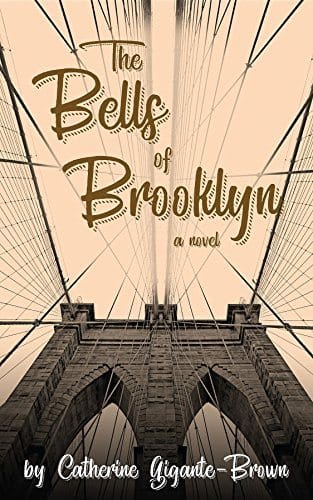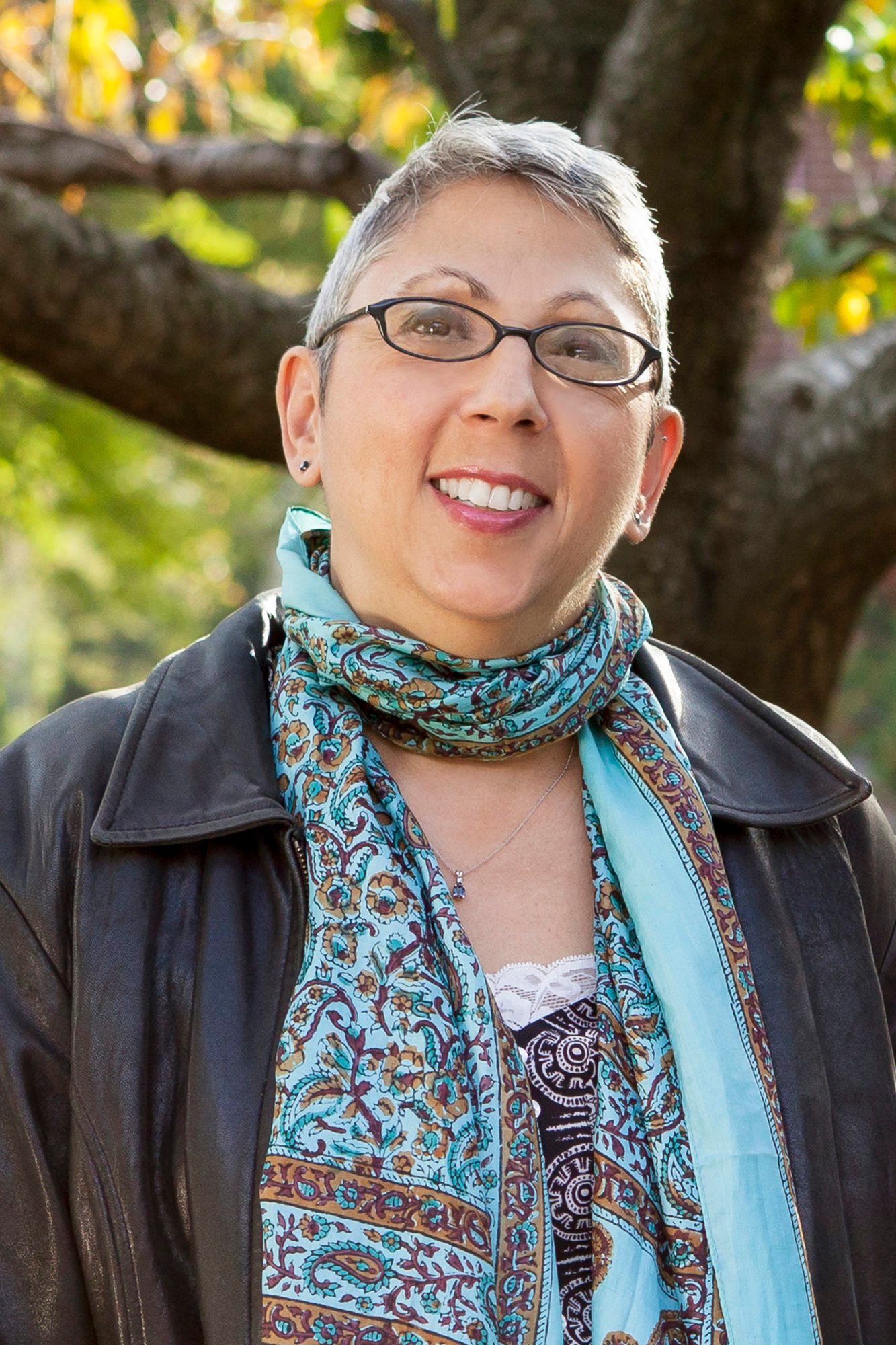BKLYNER: Cathy Gigante-Brown & The Bells of Brooklyn


Catherine Gigante-Brown is writer of fiction, nonfiction and poetry, and a third generation Brooklynite. She was born in Bay Ridge, went to Fort Hamilton High School, and currently lives in Windsor Terrace with her husband and son.

Her latest book, The Bells of Brooklyn – a tale of rebirth, forgiveness, hope and redemption, and a sequel to The El is out in print, so we thought it was a good time to talk about books and Brooklyn.
The book is set in Borough Park, just after the end of World War II, almost a decade after the original story takes place, and focuses on the Paradiso clan, an Italian-American family.
Can you tell us what prompted you to revisit the characters in The El and write this sequel?
My readers! I never thought I’d be writing a sequel to The El but fans of the book kept begging me to. (It’s about an Italian-American family living in 1936 Borough Park.) They wanted to know if Sully and Rosanna ever got together, how Kewpie and Tiger turned out, what happened to Denise. At first, I thought there was no way I could do a sequel—I was in the middle of writing my second novel Different Drummer, which is set in 1970s Brooklyn. But the more I thought about it, I convinced myself I could. And I did.

Is it challenging to revisit characters from a previous book?
Even though I started writing The Bells of Brooklyn two years after The El was published, I slipped right into it like a comfortable pair of shoes. It takes place almost 10 years after The El does. I enjoyed figuring out where everyone would be a decade later—plus I introduced some new characters. I actually kept a chart of people’s attributes so I’d be consistent between both books.
Have you changed as a writer since The El was published in 2012? Did you approach the sequel differently?
Even though the ebook came out in 2012, I finished writing The El in 2006. It took six months to write and six years to find a publisher! I think I matured as a writer between 2006 and 2014, when I started working on The Bells of Brooklyn. Writing is like exercising a muscle—the more you write, the stronger you become at your craft. I approached The Bells… the same was as I did The El. I wrote whenever I had time—I’m also a freelance journalist, proofreader and copyeditor. But I was so drawn to the story, I pined away for it when couldn’t work on the novel because of other assignments.
In a previous interview, you are quoted saying, “Brooklyn is a character in the book,” relating to your upbringing. Can you give us an example of this character, and how it appears in your life and work?
In all of my books, Brooklyn is like a familiar friend. It’s very “present” and the story couldn’t take place anywhere else. I think Brooklyn gives my books texture and personality. I try to include lots of details—from the roast beef at Roll-N-Roaster in Different Drummer to pickles in sidewalk barrels to Luna Park in The El and The Bells… Even the name, The Bells of Brooklyn refers to the tradition of church bells ringing at midnight on New Year’s Eve. Some old-timers still refer to it as The Bells… In the book’s first paragraph, I write: “Church bells, school bells, doorbells, the bells on the knife man’s cart, the bells on a toddler’s shoes, on the counter in a greasy spoon diner, the ring of the telephone. The bells guide us home and usher us away. They are always there, always present, just like the air we breathe is.” And it’s true! Fun fact, there’s a type of bell mentioned in every chapter.
Tell us about the moment when you finish a novel. Is it euphoric, stressful?
There are a whole bunch of emotions going on when you finish a book. Part joy, part relief, and there’s also a sense of loss. You don’t want to leave the characters. They feel like family—and in my case, many of them are family. Several characters were inspired by real people. I also named characters after friends and family who have supported my writing over the years.
Many readers may not be aware of how much research goes into writing a novel with historical elements. Can you explain a bit about your research process?
I used a combination of oral history and electronic history. The Internet makes research easy. You can actually read blog entries by people who remembered what Dish Night was like. I was able to incorporate stories I heard about when World War II ended or experiences during the War—like Roy’s capture in Holland. I usually just sit down, write and research as I go along. If I’m not sure when, say, a particular battle during the Second World War happened, I might just put a note to check the date later and keep writing so I don’t disturb the creative flow.
Do you feel like a younger generation of Brooklynites can learn something about the borough from your novels? If so, what?
I think we can always learn from the past. In my books, new generations will get an idea of what Brooklyn was like in the 1930s, 1940s and 1970s. But as much as times have changed, people are basically the same. They still want the same things: to feel loved, to feel safe, to have enough.
What are your greatest struggles as an artist? What about your greatest moment of success?
Finding time to write can be hard. Plus, it’s difficult to support yourself as a writer. (I’m lucky my husband has a union job with health benefits!) You find yourself doing other types of writing to earn a living when all you want to do is write novels. But I think not being able to be a novelist 24/7 makes you appreciate the time you can squirrel away to write. My greatest moment was holding my first novel. I wish my parents were still alive to see it. I am very grateful that Volossal took a chance on me as a first-time author.
When (and how) did you know that you wanted to be a writer? Is there a specific moment that you started calling yourself a writer?
I knew I wanted to be a writer pretty much when I first learned how to write. I was a shy, scrawny kid who stuttered. When I wrote, I could express myself in a way I couldn’t when I spoke. People told me I was good at it. I won a couple of awards for my writing in high school. I started calling myself a writer when I won an award for my short story “RETFA” in a city-wide contest and was given the grand sum of $5. That technically made me a professional. I was lucky to get an internship at Seventeen Magazine when I was a senior at Fort Hamilton High School. Seventeen bought a lot of my poetry, and it helped pay my way through Hunter College.
You’ve lived in many Brooklyn neighborhoods throughout your life. We hear a lot of stories about how Brooklyn has changed, but can you tell us what (if anything) remains the same?
Brooklyn as a whole has changed. It’s become more gentrified and there seem to be very few native Brooklynites left. We’re an anomaly. I’m a third-generation Brooklynite; my husband’s family has been here for five generations. Bay Ridge, the neighborhood where I grew up, has shifted ethnicities. When I was a kid, it was all Italian, Greek, Norwegian and Irish. Now it’s more Asian and Muslim. I think it’s great that Brooklyn has a long history of welcoming new immigrants, and I address this in The El and The Bells of Brooklyn: that beautiful smorgasbord which makes us unique.
What prompted you to move to Windsor Terrace, and what is your favorite spot in the neighborhood?
I settled in Windsor Terrace when my husband’s family offered to let us rent their house because they were relocating to Florida. Before that I’d lived in Brighton Beach and Gravesend besides Bay Ridge. Each area has something special about it. My favorite thing about Windsor Terrace has to be Prospect Park. Only a few blocks away, it’s the neighborhood’s backyard.
What other writers — who write about Brooklyn specifically — do you most admire/read?
Pete Hamill, hands down. The way he describes Brooklyn, you can feel his love for the borough in between the lines. My favorite novel of his is Forever. I also love the work of Jacqueline Woodson, especially Another Brooklyn.
When is your next live reading (so readers can attend)?
I have a book launch/reading at the BookMark Shoppe in Bay Ridge at 4 pm on Sunday, June 25. There’s also one in the works at 440 Gallery in Park Slope but the date hasn’t been set yet. Stay tuned and keep checking The Bells of Brooklyn’s Facebook page for the latest events.
What are you working on now?
Reading Jacqueline Woodson inspired me to try my hand at writing a young adult novel. It’s set—where else?—in Brooklyn.



